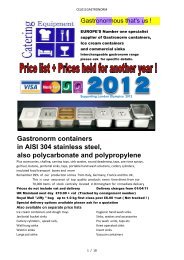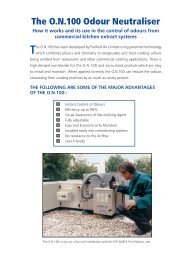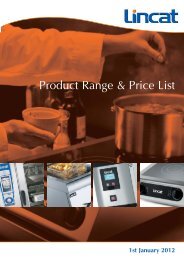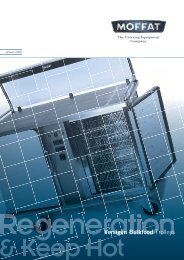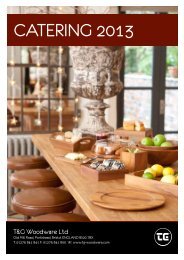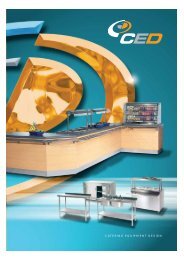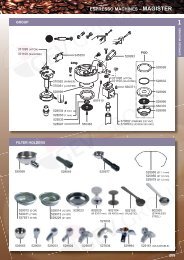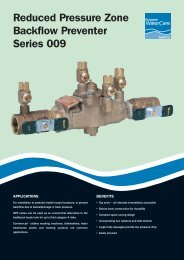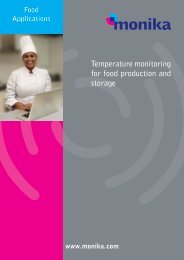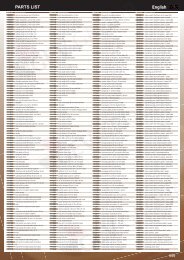Gram Process Range - CESA
Gram Process Range - CESA
Gram Process Range - CESA
Create successful ePaper yourself
Turn your PDF publications into a flip-book with our unique Google optimized e-Paper software.
How to work with blast chilling and freezing....<br />
– and achieve results!<br />
Blast chill +70°/+3°C<br />
Only fast, controlled reduction of the core temperature of<br />
a cooked food item makes it possible to preserve both<br />
natural goodness and the prevention of the accelerated<br />
growth of harmful bacteria at temperatures between +70°C<br />
and +10°C.<br />
<strong>Gram</strong> blast chillers bring food items through this high risk<br />
temperature range as fast as possible. The core temperature<br />
will reach +3°C in 90 minutes, helping to preserve<br />
natural vitamins and maintain the appearance and taste of<br />
the food.<br />
Temperature curves using IFR<br />
Temperature °C<br />
90°<br />
70°<br />
Blast freezing +70°/-18°C<br />
If the food item is to be stored for a longer period of time it<br />
must be shock frozen to a minimum of -18°C. As a direct<br />
result, water in the product is naturally converted into ice.<br />
Using commercial blast freezers a core temperature of -18°C<br />
is reached within HACCP requirements of 4 hours. During<br />
this timescale ice crystals that form will be small, known as<br />
micro crystals. These micro crystals are less damaging and<br />
do not adversely effect the quality of the food item. Product<br />
that is frozen over a longer period of time can be damaged<br />
by the formation of larger ice crystals. Thus reducing both<br />
the nutritional value and compromising the structure of<br />
the food. Unprocessed raw materials, semi-processed or<br />
cooked food can all be frozen to achieve the optimum<br />
product when defrosted<br />
or regenerated.<br />
Temperature °C<br />
90°<br />
70°<br />
3°<br />
0°<br />
30 60<br />
90 min.<br />
0%<br />
-20°<br />
100%<br />
50%<br />
20%<br />
Core temperature<br />
Surface temperature<br />
Air temperature<br />
Fan speed<br />
0°<br />
120<br />
240 min.<br />
0%<br />
-18°<br />
-40°<br />
100%<br />
50%<br />
20%<br />
Core temperature<br />
Surface temperature<br />
Air temperature<br />
Fan speed<br />
+2°C<br />
–20°C<br />
▲<br />
▲<br />
▲<br />
▲<br />
▲<br />
▲<br />
▲<br />
▲<br />
Cooking Blast chilling Storage Regeneration Serving<br />
Cooking Shock freezing Storage Thawing Regeneration<br />
▲<br />
–20°C<br />
▲<br />
▲<br />
▲<br />
▲<br />
Raw materials Shock freezing Storage Thawing/Cooking Serving<br />
Blast chilling and freezing are integral parts of any Cook Chill operation or any chilled production of food<br />
The principle of cook-chill/freezing production is to cook the food and then immediately chill or freeze it for safe storage. The food is then regenerated, after<br />
thawing - before being served.<br />
10



